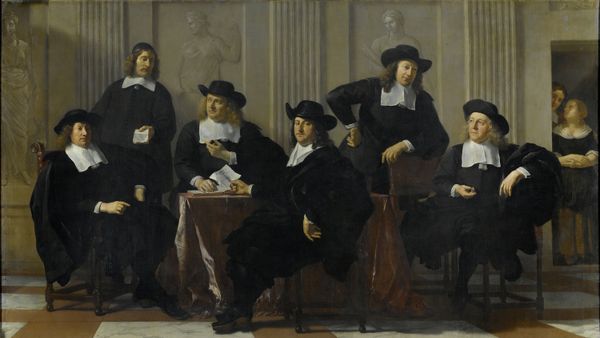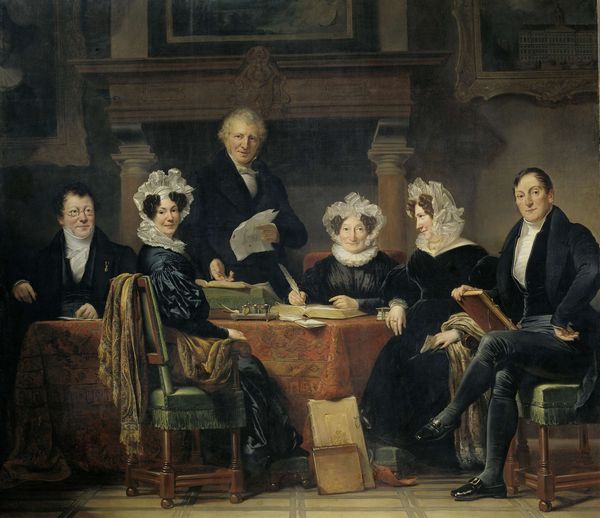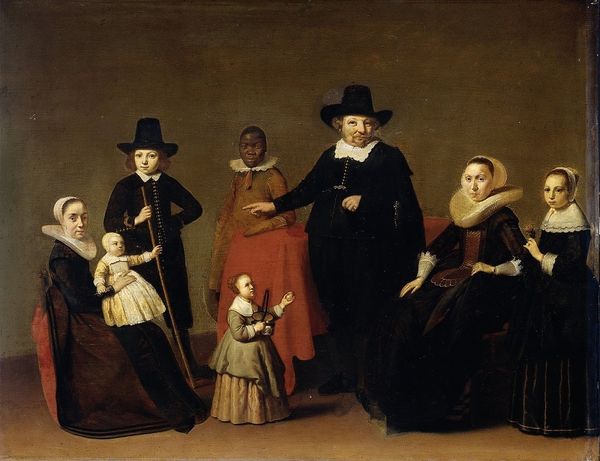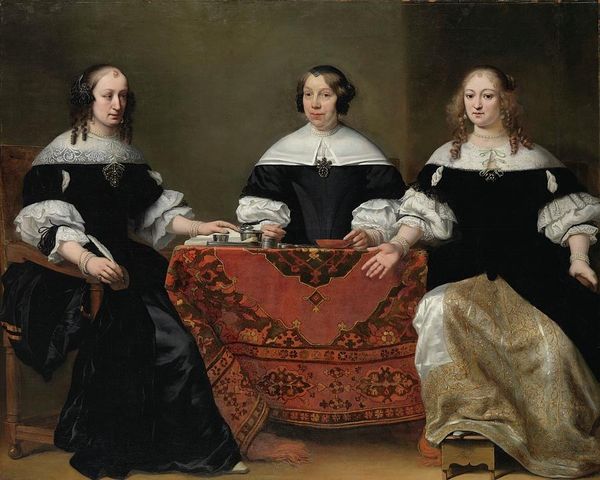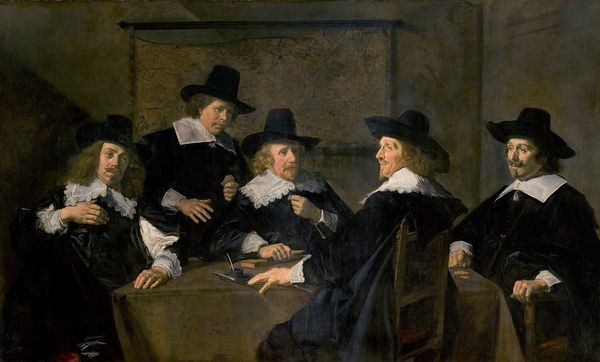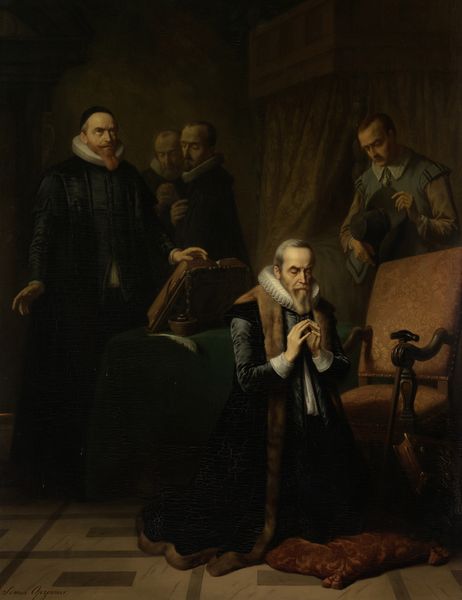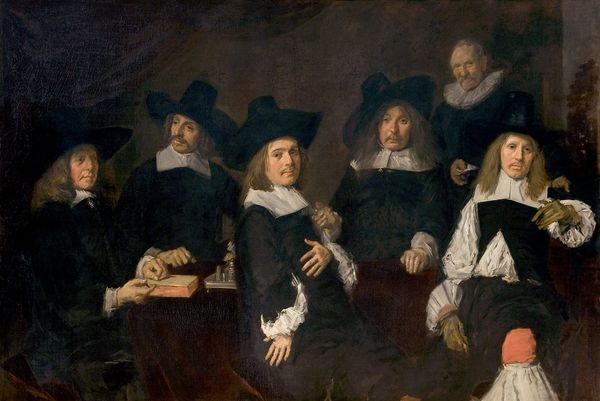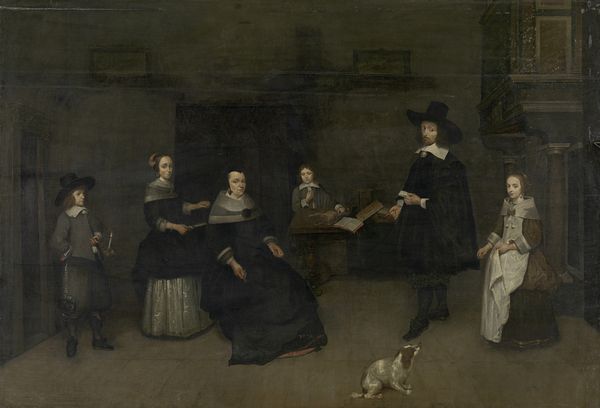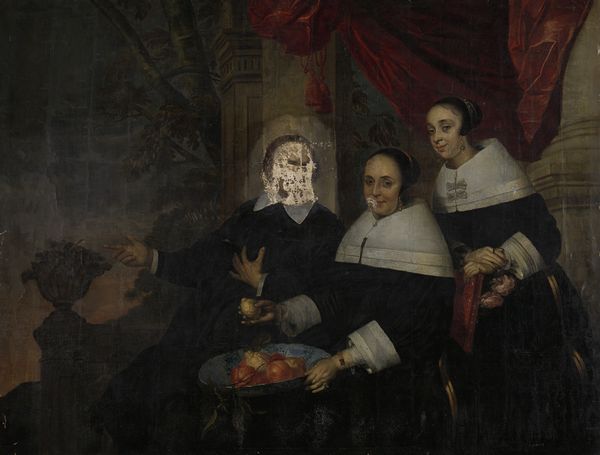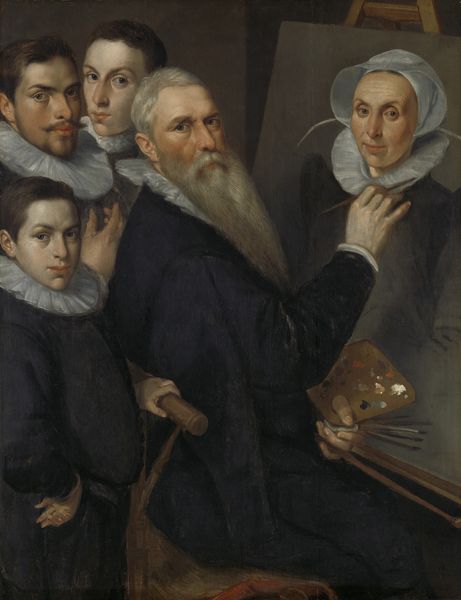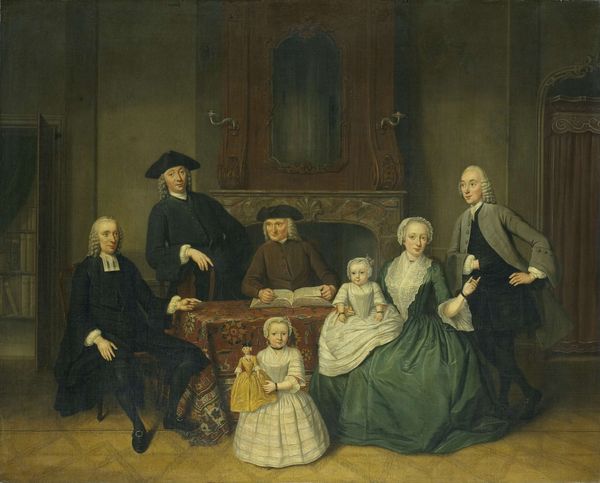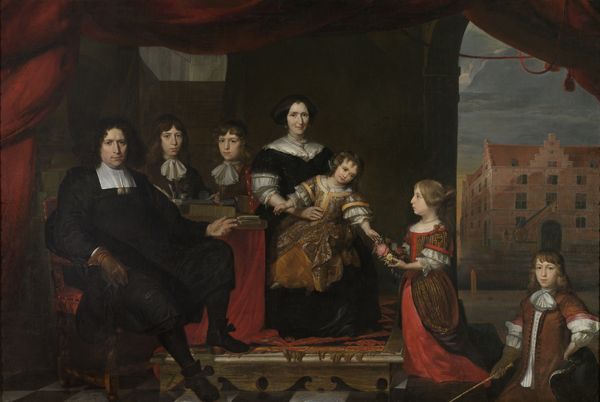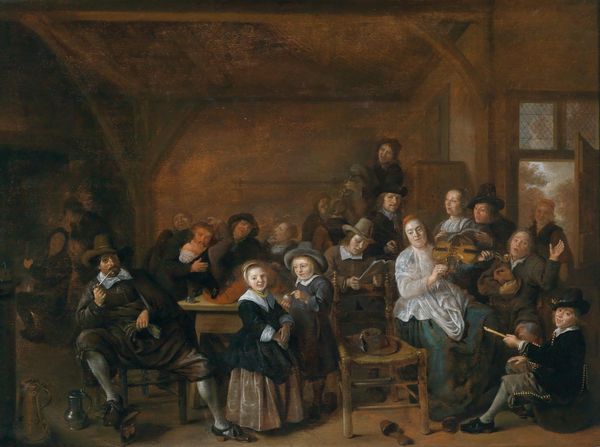
oil-paint
#
portrait
#
baroque
#
dutch-golden-age
#
oil-paint
#
oil painting
#
group-portraits
#
genre-painting
Dimensions: 170.5 x 249.5 cm
Copyright: Public domain
Curator: Before us is Frans Hals' “The Regentesses of the Old Men’s Almshouse, Haarlem,” completed in 1664. Editor: The stark contrast between the somber black attire and the bright white collars immediately strikes me. There's a solemnity, almost a rigidness, to their posture. Curator: It's a pivotal work. Hals was commissioned to paint the governing board of this almshouse, an institution providing care for elderly men. It's crucial to view this within the socio-political framework of the Dutch Golden Age, when the role of women, particularly in philanthropic endeavors, was complex yet visible. We see five women of mature age in front of what looks to be an indoor domestic space, the faces carefully shaped to convey, it looks like, the serious work that they do for the citizens of Haarlem. Editor: And what materials would he have been working with to bring this work into being? How do we understand the creation and the production of the oil paint on this canvas in 1664? Hals was known for his seemingly effortless brushwork. It is a key aspect to understand how that affects its reception; his ability to depict the textures of fabric and flesh makes this more than just a record; it feels incredibly modern in its application of layers to generate lifelike visages. Curator: Precisely. We cannot detach this painterly freedom from its time, because these are the brushstrokes of empowerment and self-determination for these women. The power they yielded to run this institution should be understood by examining women’s work at the time, because this was in fact a rarity for women during the seventeenth century. Editor: The clothing is also communicating this message of power—the almost severe uniformity emphasizes a collective purpose, masking individual expression but uniting them in a shared function. But look closely at each face, all rendered realistically, perhaps they are subtly hinting at individual stories amidst uniformity and tradition. The details seem to almost celebrate material craft. Curator: It's fascinating how Hals manages to convey their collective authority while still allowing glimpses of individuality. It compels us to reconsider conventional gender norms and the economic factors that helped solidify an infrastructure that was largely managed by a handful of families. Editor: So true! And from a purely art historical lens, examining his technique teaches us to acknowledge how materials were utilized at the time to construct identity. Curator: Absolutely. Hals delivers something incredibly rich by connecting materials with the nuances of intersectional stories—this prompts conversations about societal transformation and the place of art. Editor: A powerful reminder that engaging with the materiality of art grants access to unique avenues for historical insight.
Comments
No comments
Be the first to comment and join the conversation on the ultimate creative platform.
